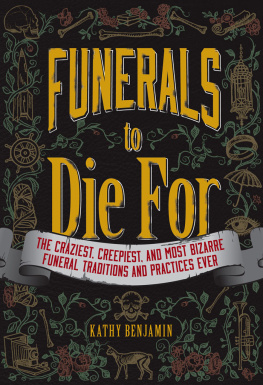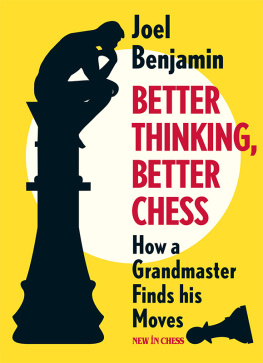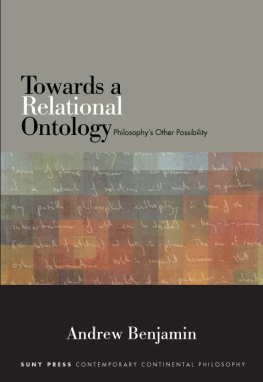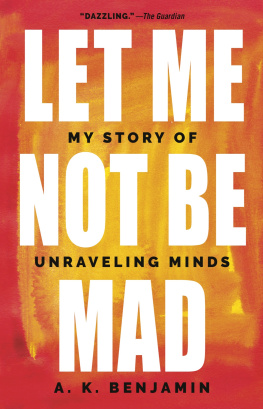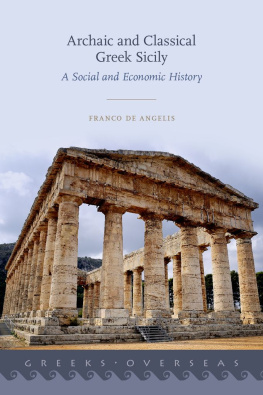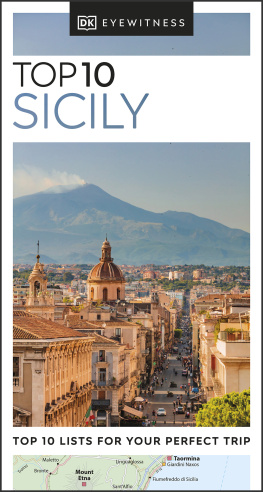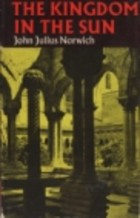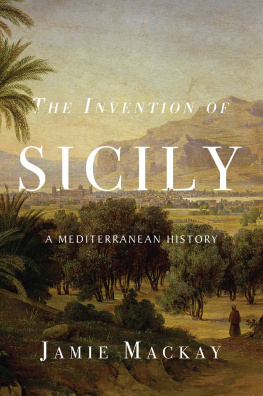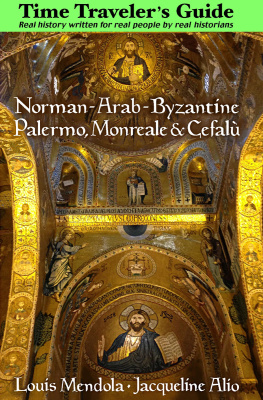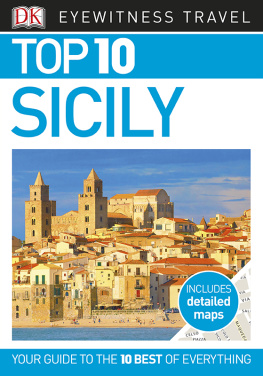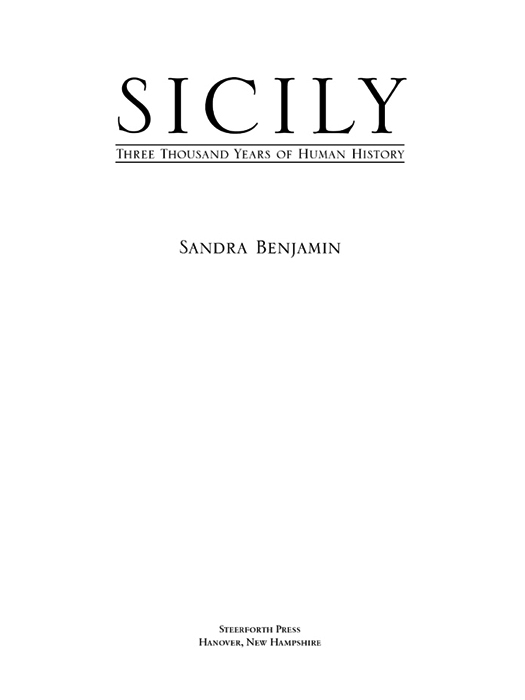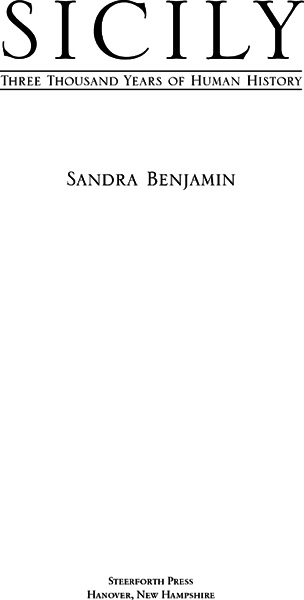To the new
EUGENE
for helping me
in new ways
C ONTENTS
M APS
A CKNOWLEDGMENTS
When in Sicily during the writing of this book I usually based myself in Mazara, with its ambience conducive to researching, to writing, and to relaxing. There I received scholarly and personal help especially from Arch. Michele Abruzzo; Dott. Aurelio Burgio and his wife, Signora Pina; Baldo Calafato; Prof. Salvatore Ingrassia and his wife, Prof.ssa Rosa; Dott. Maurizio Pantaleo; Dott. Corrado Sansone; and Arch. Mario Tumbiolo. Elsewhere in Trapani province I thank Prof. Giovanni Alagna, Avv. Ignazio Caruso, and Giuseppe DeArcangelo and his wife, Crocetta Benenati.
In Palermo and environs, thanks to Dr.ssa Patricia Ardizzone; Dott. Franco Barna; Dott. Andrea Borruso; Suora Anna Maria Catelani; Prof. Pippo Costanzo; Prof. Giorgio Chinnici and his wife, Nora, and daughter, Valentina; Rosalba Damiata; Dott. Fabrizio DAvenia; Prof. Giacomo Dentici and his wife, Dott.ssa Rosamaria Buccellato; Ing. Domenico La Cavera; Dott. Vito La Fata; Dott. Gioacchino Lanza Tomasi; Dott. Rosario Lentini; Prof. Giuseppe Carlo Marino, Dott. Romolo Menighetti; Avv. Giuseppe Palmeri; Prof. Francesco Renda; Prof.ssa Patrizia Sardina; Padre Michelangelo Simonato; Prof. Alberto Tulumello; and Prof. Paolo Viola.
In Messina, thanks to Prof.ssa Michela DAngelo; Dott. Sergio Di Giacomo; Prof.ssa Maria Teresa Di Paola; Prof. Giuseppe Martino and his wife, Prof.ssa Silvana Salandra; and Prof. Rosario Moscheo. In Lipari, Dott.ssa Maria Grazia Vanaria. In Catania and its province, Anna Rita Anguzza; Prof. Sebastiano Favitta; Dott. Andrea Imbrogiano and his family; Prof. Giacomo Pace; Antonino Vasta; and Ercole Vasta. In the province of Enna, Primo David. In the province of Agrigento, Dott.ssa Maria Gerardi Marino. In the province of Siracusa, Saro Cuda and Katherine Magnus.
Farther afield, several people provided hospitality that facilitated my doing research in their cities: In Naples, Pina and Antonia Palladino, and Maria and Vito Salandra. In New York City, Peggy Earle, Jerry and Eleanor Koffler, Tom McCauley and Marianne Di Palermo McCauley, Evgeny Rivkin and his family, and Sara and Bernie Zagdanski.
To librarians and others who sought material for me in their professional capacity, it goes without saying that without them this book could never have been written. Those known to me by name are Dott. Alberto Costantino in Trapani; Dott. Rino Rocco Russo in Caltagirone; Dr.ssa Cuffaro at the Biblioteca Nazionale in Palermo; and in Naples, Dott.ssa Vera Valitutto (Universit degli Studi), Letizia Ragonesi (Istituto Universitario Orientale), Dott. Giovanni Marcello (Biblioteca Nazionale), Antonia Mara (municipal library); Dott.ssa Cristina Liguori and others at the branch St. Elmo; and Tony Salandra. I owe particular thanks to Dott. Rosario Salafia and his friendly staff in Mazara, Dott. Salvatore Pedone in Palermo, Dott. Roberto Foder and Dott. Riccardo Abbate of ISTAT in Palermo, and Dott.ssa Lucia Marinelli in Naples. Its impossible to express sufficient appreciation of the New York Public Librarys collections. Im indebted to the people at the reference desk in the General Reference Division at 42nd Street not only for help in locating particular items but also for ideas, and to the Belmont branch for its numerous publications on Italian history and its atmosphere of repose.
Regarding the nuts and bolts of constructing a book, Im grateful to Gene and to mms for coming to my aid in moments of computer distress.
I NTRODUCTION
When you hear Sicily whats the first thing you think of? If youre like most people, the immediate association is Mafia. To be sure, the island has suffered, for hundreds of years, the peculiar gangster-government collaboration known now as Mafia, yet Sicily has a rich history that long antedates that organization.
In the beginning were the Greeks, who dominated Sicily for five hundred years. As it is the classical sites that bring most tourists to Sicily, I have described some of the architecture still visible (after two-thousand-plus years) and the political and economic conditions that gave rise to those temples and fortifications.
The trimillennial drama continued with protagonists from three continents: the Romans from the Italic peninsula occupied Sicily for six hundred years, followed by the Vandals and Goths from northeastern Europe and the Byzantines from westernmost Asia. Then Muslims from North Africa came to Sicily and diffused their advanced culture and agriculture. The Normans from what is today northwestern France introduced the Sicilians to feudalism and to the ideas of parliament and responsible government. A scion of the Normans, Frederick, while king of Sicily was also Holy Roman Emperor and one of Europes most complex sovereigns ever.
As Europe developed nation-states, Sicily was occupied by the aggrandizing Spanish. The houses of Savoy and of Hapsburg ruled Sicily for brief periods, then the Spanish took over again as the Bourbon dynasty. Giuseppe Garibaldi won Sicily from the Bourbons and made it part of a new Kingdom of Italy. After World War II, Sicily was ruled briefly by the Americans and the British that was a novelty for the Americans, though the British had been instrumental in running Sicily off and on for centuries.
So had the outlaws, if not for quite so long. This book will consider how the serial foreign occupation helped to create an environment in which the Mafia sprouted.
Many regions of the world, indeed other regions of Italy, experienced similar invasions, resettlement, and foreign rule, without subjecting themselves to Mafia-like domination. So in Sicily additional forces must have been at work. Climate and topography inevitably influence the character of a people, and we shall see how they did so for Sicilians. In a word, wheat. Dry, hilly Sicily supports few crops; wheat was the staple of the classical Mediterranean diet, and Sicilians cultivating their hard wheat needed little initiative or industry. This fostered the poverty and passivity that traditionally characterized the island.
In consequence, the ambitious emigrated. In recent centuries Sicily has been unusual among nations in the high proportion of its residents who moved abroad. Emigration not only took Sicilian practices to other lands, it also significantly changed the lives of people who remained on the island.
These forces, tightly interwoven, go a long way toward explaining Sicily and the Sicilians. Most books on Sicily deal primarily with the fine arts or with religious life, but I have hardly touched on them. I have focused rather on the economic and demographic aspects of Sicilys story. This book is a general history, an account of welfare and warfare. Within it I have highlighted certain threads that run through the centuries: Sicilys particular patterns of land use and landholding, and Sicilys unique relationship with the church. Sicilys character has also been determined by the lack of influence from events that affected Europe generally, namely the Crusades and Columbuss discovery of America.
Sicily is known for its Mafia and its emigration. Note the development of banditry and corruption forerunning the modern Mafia, but note too that the problem of the Mafia in todays Sicily is something different from foreigners common perception. Likewise, the high emigration from Sicily overshadows the importance of its immigration. Besides the several peoples who ruled Sicily essentially those in this books chapter titles other peoples participated in Sicilys story, among them Jews and Ligurians and Albanians. All are ancestors of modern Sicilians. Having found their study fascinating, I invite you to come and meet them.


